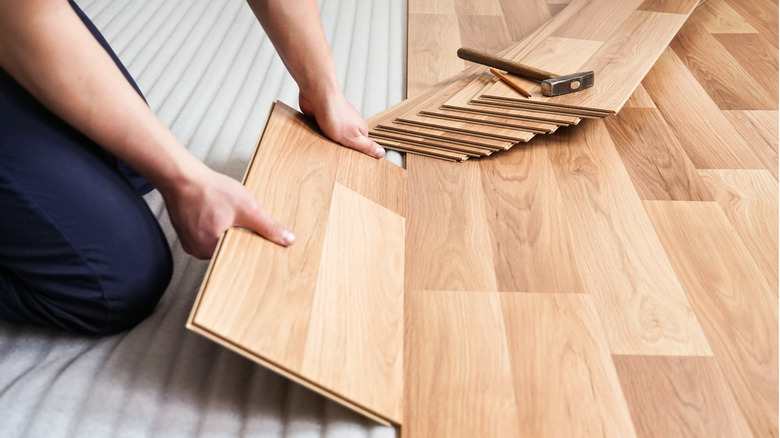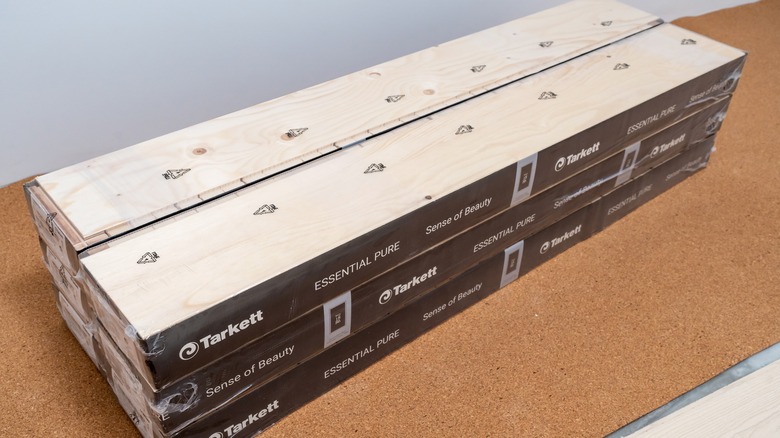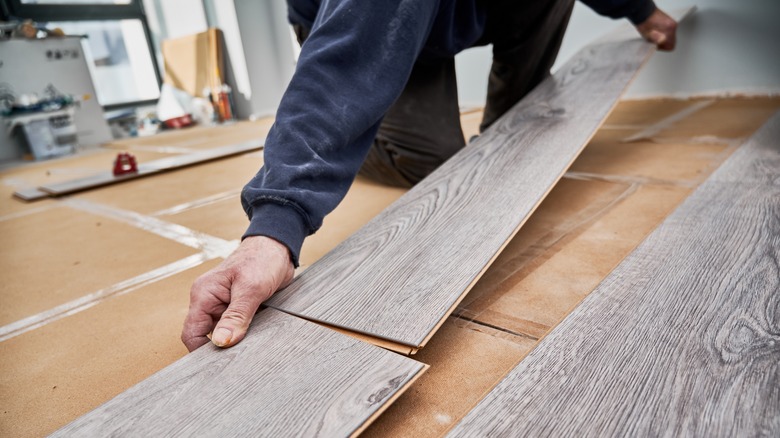The Crucial Step You Don't Want To Skip During A Laminate Floor Installation
Laminate flooring may not have the same glowing reputation as hardwood, but in many aspects, laminate is actually better. It's affordable, durable, and mimics wood beautifully, making it a great budget-friendly option. However, while it's fantastic for living rooms and bedrooms, it's important to note that it does not do well around moisture. It can actually warp with too much exposure to water or humidity, so it may not be the best flooring option for your kitchen or bathroom. By the same token, it's crucial to always allow laminate flooring to acclimate before installing it anywhere in your house.
Instead of getting to work the moment you receive your panels, you'll want to let them sit for 48 to 72 hours in order to ensure they've fully adjusted your home's humidity levels. Otherwise, you'll risk all of your work going to waste as your brand-new floor will be susceptible to shrinking, expanding, or even buckling. But it's not enough to simply dump it out of its packaging and let it lie around for a few days. Rather, there are a number of specific steps you'll want to follow to let your laminate flooring acclimate correctly.
How to properly acclimate laminate flooring
Laminate flooring is sensitive to temperature and humidity and has the ability to shrink or expand based on its environment. That's why it's imperative to always let it adjust to the climate inside your home before installing it. If you're too quick to get the boards in place, you may find that you've placed them too close together if they haven't finished expanding. Alternatively, you may be left with big, unsightly gaps between panels that haven't finished shrinking. The manufacturer's instructions should include details on how long your particular flooring should be left to acclimate, but there's no such thing as too much time, so you can go past 72 hours to be on the safe side.
As for how you actually go about the process, you'll want to place the boards in the center of the room where they're to be installed. Make sure the humidity level is between 35% to 65% and that the temperature is set between 63 and 86 degrees Fahrenheit. This will allow the flooring to become accustomed to the correct environment. What's more, leave it in all of its original packaging and make sure it's not set upright so it doesn't bend out of shape. One final tip to keep in mind is to never install laminate flooring in a room that's just been painted or plastered as this will impact the humidity level and thus, the laminate.
Prepping your space is an important part of the acclimatization process
To install laminate flooring correctly, not only do you need to acclimate your laminate flooring to your space, you also need to ensure that your space is properly prepped for acclimatization and installation. First, check that the subfloor is dry. If yours is made of wood, use a two-pronged moisture meter to check that the moisture content is 16% or less. For concrete subflooring, use a digital hygrometer to make sure the relative humidity is under 65%. Next, level the subfloor, sanding down high spots and using an underlayment to level out low spots. The latter will not only ensure that the surface is nice and flat, making installation easier, but it will also double as insulation, prevent unnecessary stress on your flooring, and even help absorb moisture.
One final point to keep in mind is to always allow for an expansion gap. Even when properly acclimatized, laminate flooring will continue reacting to humidity and is likely to expand in the hotter summer months. During installation, leave a ¼-inch to ⅜-inch gap around the perimeter of the room so that your planks aren't pushing against your walls, which may ultimately cause the flooring to buckle.


